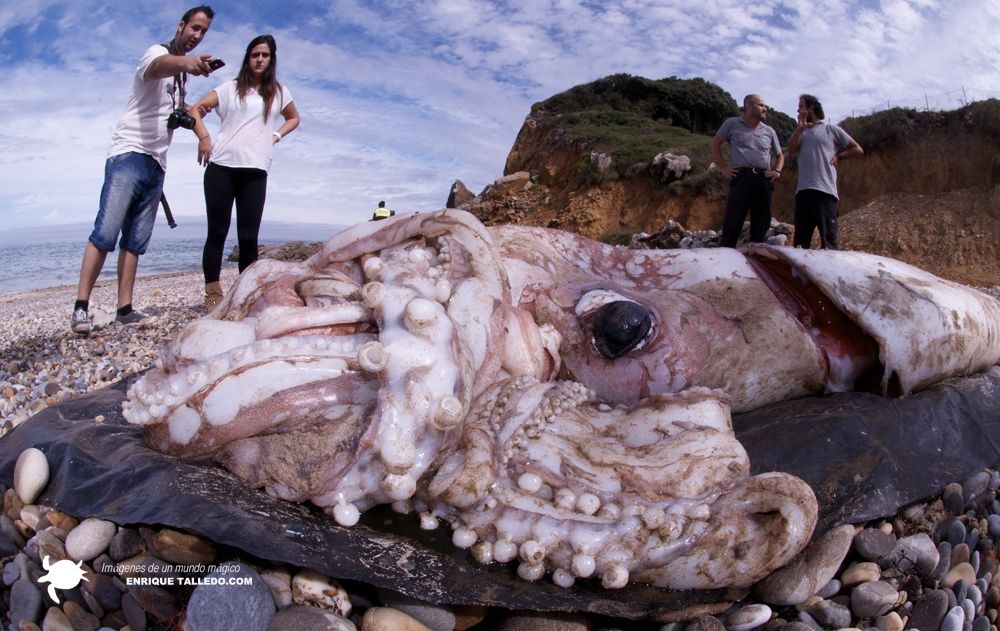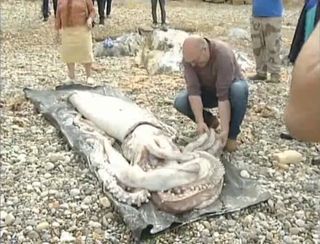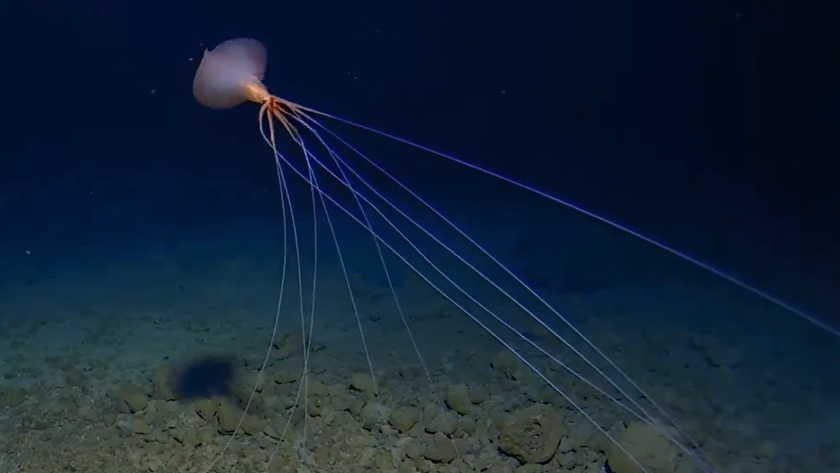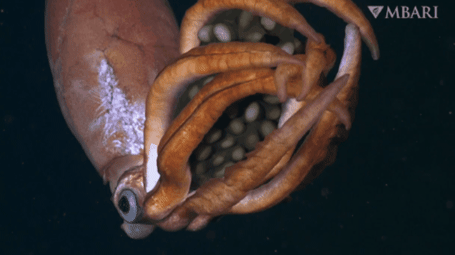Elusive Giant Squid Washes Up on Spanish Beach

Updated at 7:23 p.m. ET.
A giant squid, whose oversized eyes and gargantuan blob of a body make it look more mythical than real beast, washed ashore Tuesday (Oct. 1) at La Arena beach in the Spanish community of Cantabria.
The beast measures some 30 feet (9 meters) in length and weighs a whopping 400 pounds (180 kilograms); and according to news reports, it is a specimen of Architeuthis dux, the largest invertebrate (animals without backbones) on Earth.
The giant squid is currently at the Maritime Museum of Cantabria, according to El Diario Montanes.
Perhaps fortuitously, an underwater photographer happened to be in the area at precisely the time the squid washed ashore. "I felt privileged to be among a few, these animals rarely can be seen, because they live at great depths and very few appear on the coast dead," Enrique Talledo told LiveScience in an email. "Its appearance is similar to a sea monster, well-adapted to life in the depths."
Tsunemi Kubodera, a zoologist at Japan's National Science Museum in Tokyo, and his colleagues, captured the first live footage of an Architeuthis giant squid in its natural habitat in 2012. The video revealed the elusive creature off the Ogasawara Islands, about 620 miles (1,000 kilometers) south of Tokyo at a depth of around 2,066 feet (630 m); the three-man crew aboard a submersible followed the giant squid down to 2,950 feet (900 m). [See Amazing Photos of Giant Squid]

"It was shining and so beautiful," team leader Tsunemi Kubodera, a zoologist at Japan's National Museum of Nature and Science, told AFP at the time. "I was so thrilled when I saw it first hand, but I was confident we would because we rigorously researched the areas we might find it, based on past data."
Sign up for the Live Science daily newsletter now
Get the world’s most fascinating discoveries delivered straight to your inbox.
In addition to boasting record-large size, the giant squid also sport the animal kingdom's largest eyes, which can be as big as a human head, according to the University of Michigan's Museum of Zoology. These enormous peepers likely allow the squid to see in the deep-sea where minimal light is available. Though little is known about where these squid live, scientists say the giants likely reside in cooler waters, as research has shown their blood doesn't carry oxygen well at high temperatures.
Like other cephalopods, a group that includes squid, octopuses, cuttlefish and their relatives, Architeuthis is thought to have an extensive nervous system and complex brain.
Steeped in mystery and legend, the deep-sea giant is said possibly to have inspired the Norse legend of the sea monster the Kraken and even Greek mythology's Scylla, a sea monster said to live in a narrow channel of water opposite its monster counterpart Charybdis.
Editor's Note: This article was updated with a photo and information from an underwater photographer.
Follow Jeanna Bryner on Twitter and Google+. Follow us @livescience, Facebook & Google+. Original article on LiveScience.
Jeanna Bryner is managing editor of Scientific American. Previously she was editor in chief of Live Science and, prior to that, an editor at Scholastic's Science World magazine. Bryner has an English degree from Salisbury University, a master's degree in biogeochemistry and environmental sciences from the University of Maryland and a graduate science journalism degree from New York University. She has worked as a biologist in Florida, where she monitored wetlands and did field surveys for endangered species, including the gorgeous Florida Scrub Jay. She also received an ocean sciences journalism fellowship from the Woods Hole Oceanographic Institution. She is a firm believer that science is for everyone and that just about everything can be viewed through the lens of science.












